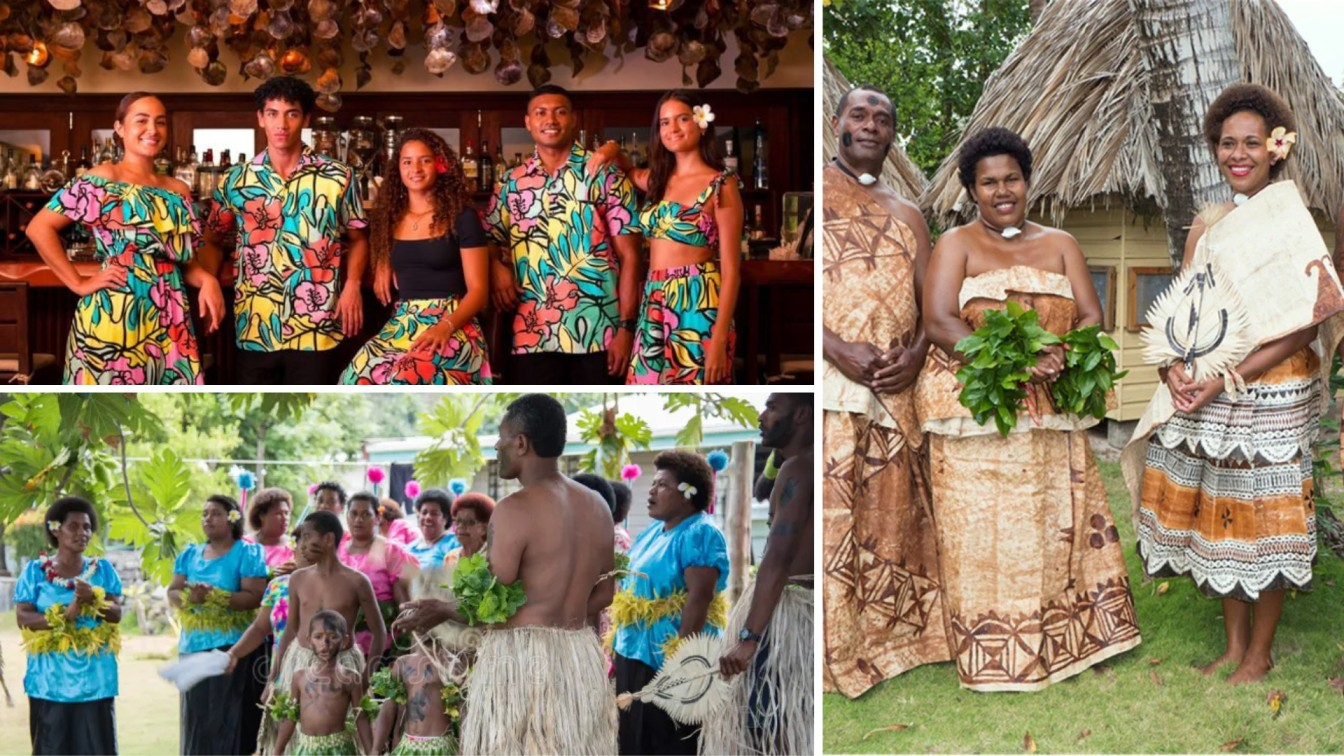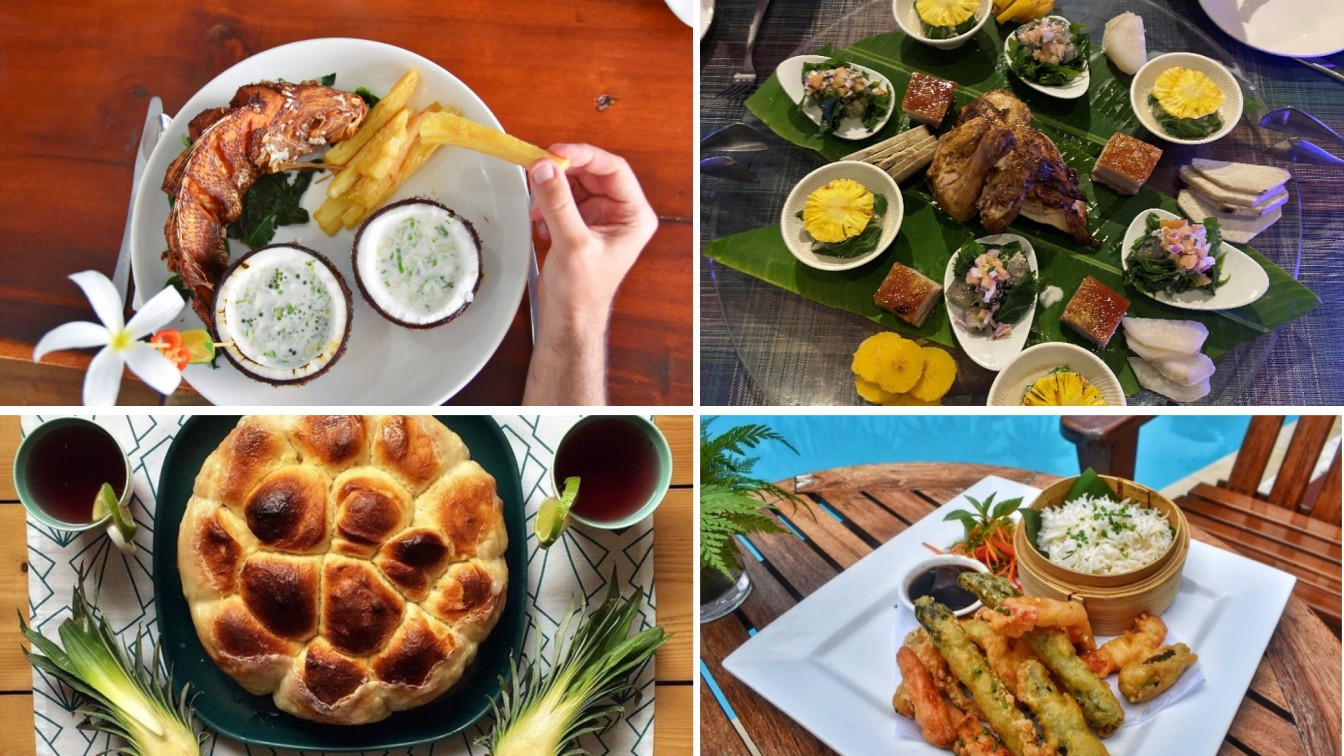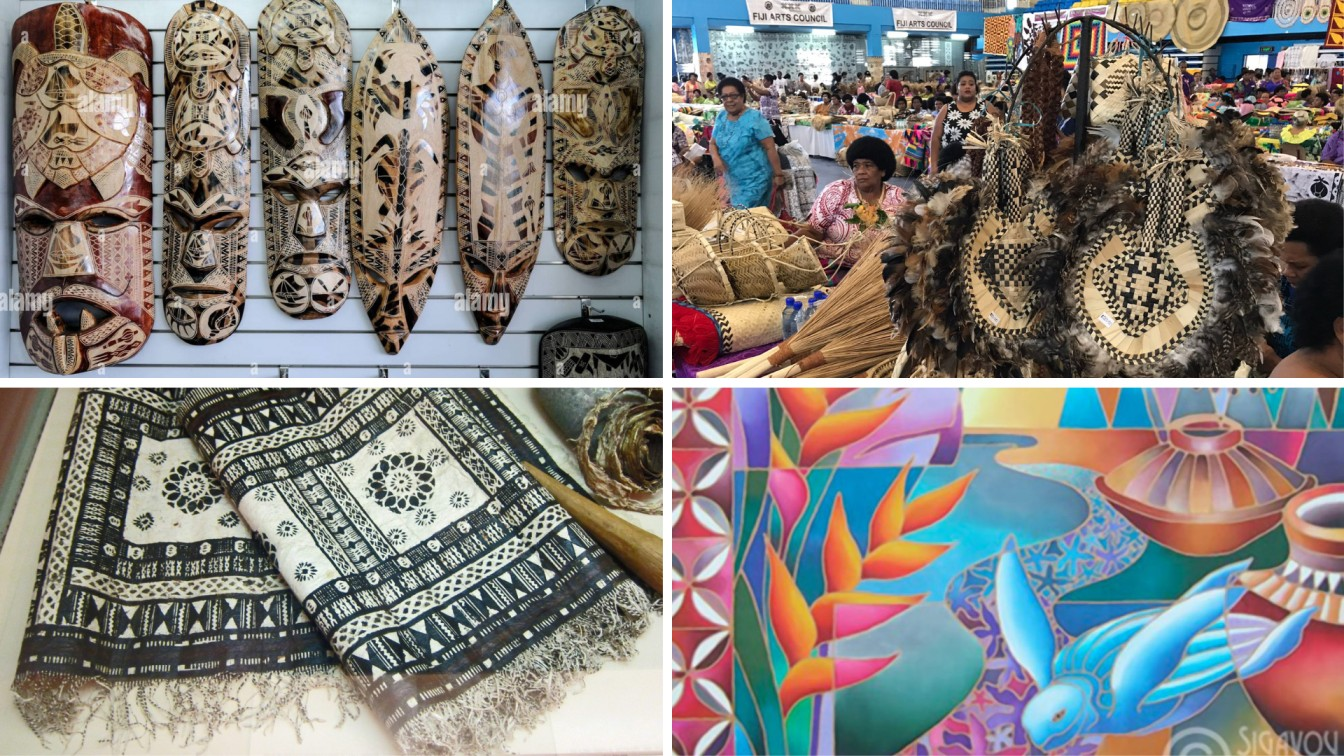Fiji's culture is a vibrant blend of indigenous Fijian, Indian, European, and Chinese influences. Traditional Fijian customs, rooted in communal living and respect for elders, are reflected in ceremonies like the sevusevu, where kava is shared. The meke, a traditional dance, and intricate handicrafts like tapa cloth showcase Fiji’s artistic heritage. Indian culture, brought by indentured laborers, contributes to Fiji’s cuisine, music, and festivals like Diwali. Christianity plays a significant role, influencing daily life and social norms. This rich cultural diversity fosters harmony, making Fiji a welcoming and unique Pacific island nation.

Fiji Clothing
Fijian traditional clothing reflects the island’s rich culture and tropical climate. The most
well-known attire is the sulu, a wraparound skirt worn by both men and women. Men typically wear
a sulu vaka taga, a formal version paired with a shirt, while women wear the sulu jaba, a long
skirt with a matching blouse. These outfits are often made from brightly colored fabrics and
adorned with traditional patterns.
For ceremonies and special occasions, Fijians wear attire made from masi (tapa cloth), a
barkcloth decorated with intricate designs. Chiefs and dancers often don grass skirts, shell
necklaces, and feathered headdresses during traditional performances.
Modern Fijians embrace Western clothing for daily wear but proudly incorporate traditional
elements into their fashion. Whether in formal events or cultural celebrations, Fijian clothing
remains a vibrant expression of identity, heritage, and island pride.

Fiji Food
Fijian cuisine is a delightful mix of indigenous, Indian, Chinese, and European influences,
offering a variety of flavors and textures. Traditional Fijian food relies on fresh seafood,
root crops like taro and cassava, and tropical fruits such as coconut, pineapple, and
breadfruit. A popular dish is lovo, where meat, fish, and vegetables are wrapped in banana
leaves and slow-cooked in an underground oven, infusing the food with a smoky aroma.
Indian influence brought flavorful curries, roti, and dhal, which have become staple foods in
Fijian households. Kokoda, a traditional raw fish dish marinated in coconut milk and lime, is a
must-try delicacy. Other favorites include palusami, taro leaves cooked in coconut cream, and
rourou, a rich spinach-like dish.
Fiji’s diverse culinary heritage reflects its multicultural society, making its food not only
delicious but also a symbol of unity and tradition.

Fiji Art
Fijian art is deeply rooted in its rich cultural heritage, reflecting the traditions and beliefs of its people. Traditional Fijian artisans craft intricate tapa (bark cloth) decorated with geometric patterns, often used for ceremonies and special occasions. Carving is another significant art form, with wooden bowls, war clubs, and tanoa (kava bowls) showcasing fine craftsmanship. Weaving is essential in Fijian culture, with women creating beautiful mats, baskets, and fans from pandanus and coconut leaves. These items are often gifted during important ceremonies. Contemporary Fijian artists blend traditional techniques with modern influences, producing stunning paintings, sculptures, and jewelry. Fijian tattooing, once a rite of passage, is making a comeback as a symbol of identity and heritage. Art in Fiji continues to evolve while preserving its ancestral roots, making it a vital part of the nation’s cultural expression.

Fiji Film Industry
Fiji’s film industry, while relatively small, has a growing presence in the Pacific region. The industry is known for producing films that highlight the country’s unique culture, landscapes, and history. Traditional storytelling is often combined with modern filmmaking techniques, reflecting Fiji’s diverse influences, from indigenous Fijian to Indian and European. Films like The Land Has Eyes (2004) have gained international recognition, portraying themes of social issues, tradition, and identity. Local filmmakers are increasingly telling their own stories, with a focus on preserving cultural heritage and exploring contemporary issues. The Fiji International Film Festival, which began in 2013, showcases local and regional films, helping to promote Pacific cinema. As the industry grows, there are more opportunities for local talent, both in front of and behind the camera, contributing to the global film community.

Fijian Economy
Fiji’s economy is a mix of agriculture, tourism, manufacturing, and services, with tourism being one of the largest contributors. The nation’s stunning beaches, coral reefs, and cultural heritage attract visitors from around the world. Agriculture, particularly sugarcane, coconut, and fish, remains vital, while the garment and textile industries also contribute significantly to export earnings. The country has a well-developed infrastructure, and the government has focused on diversifying its economy by investing in sectors such as information technology and renewable energy. Fiji is a member of the Pacific Islands Forum and other regional organizations, which helps foster trade and economic cooperation within the Pacific region. Despite challenges such as natural disasters and global economic shifts, Fiji’s economy has shown resilience, with steady growth in recent years.